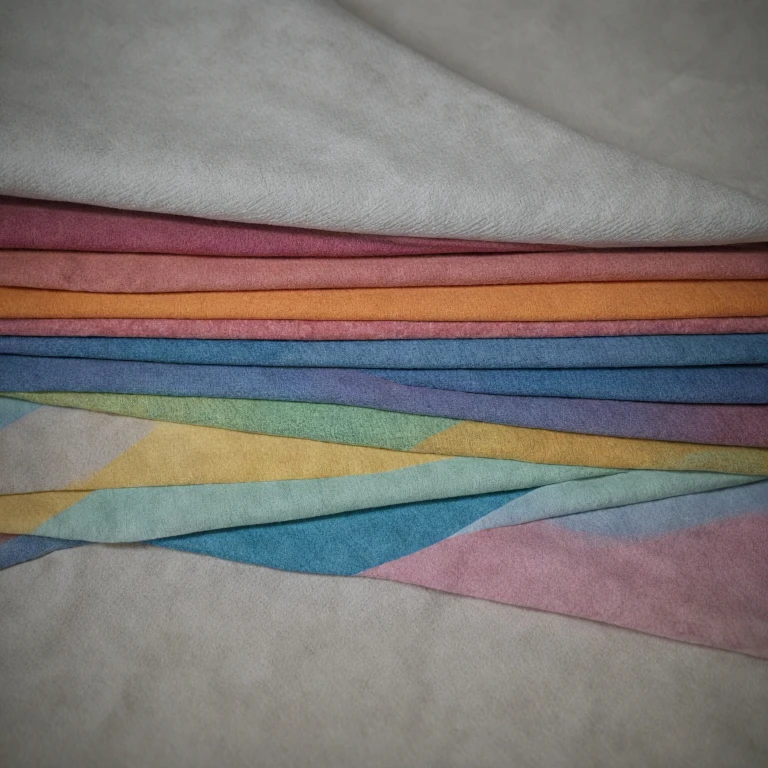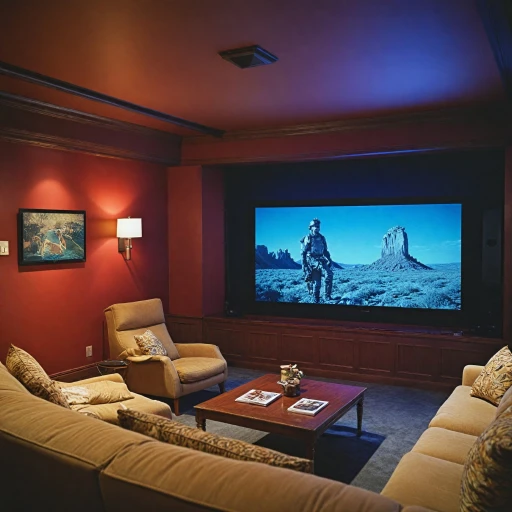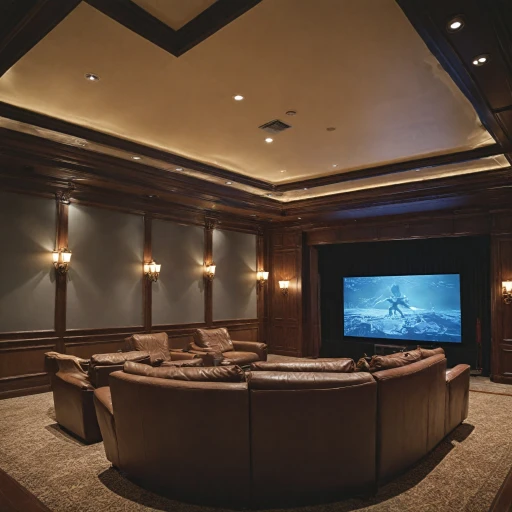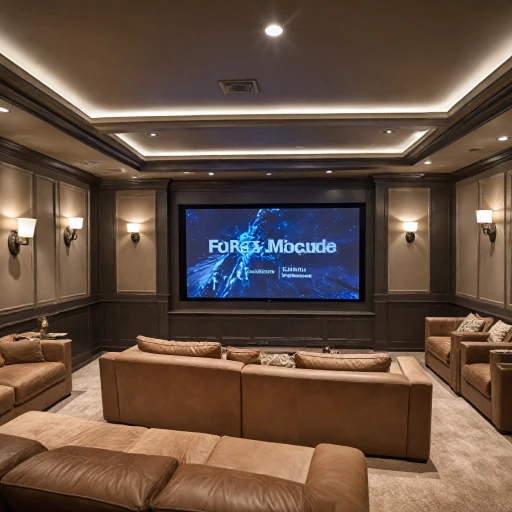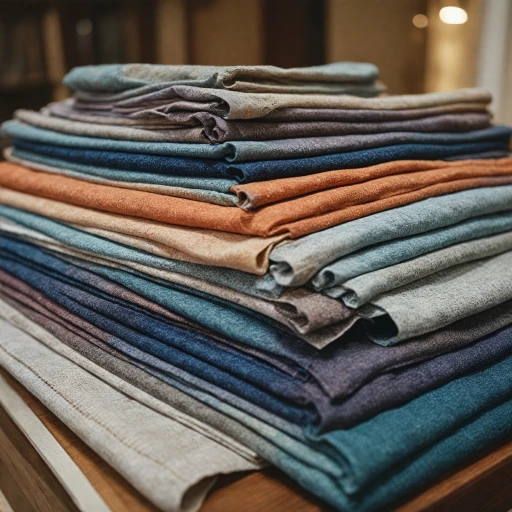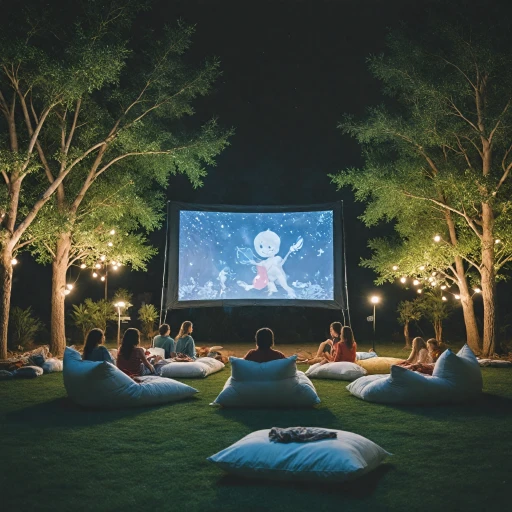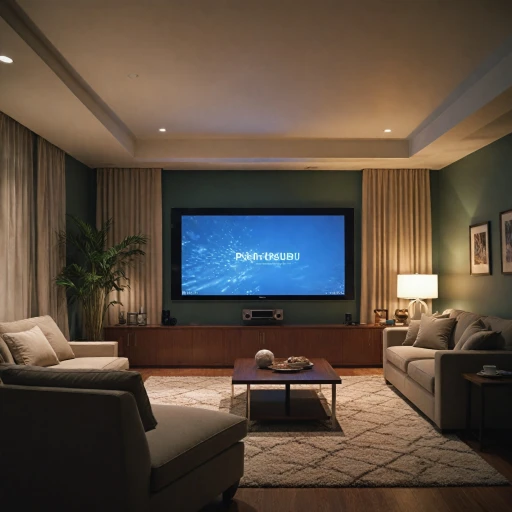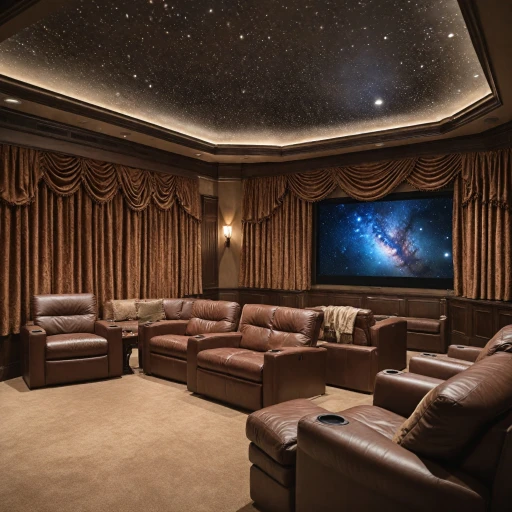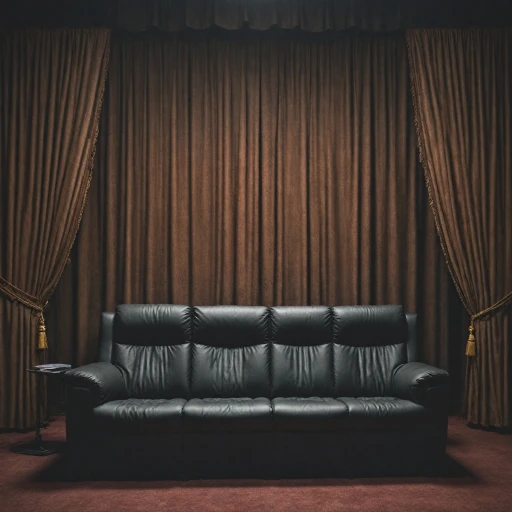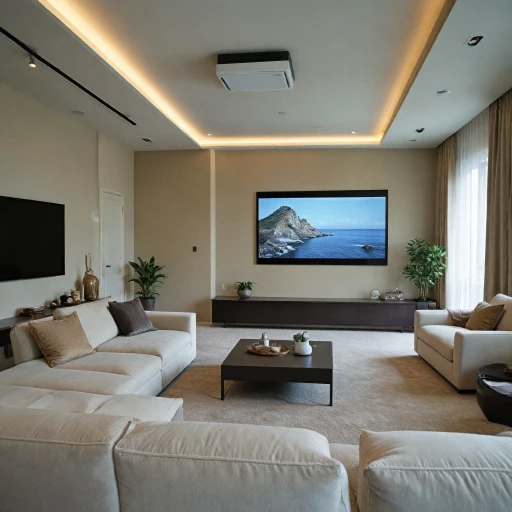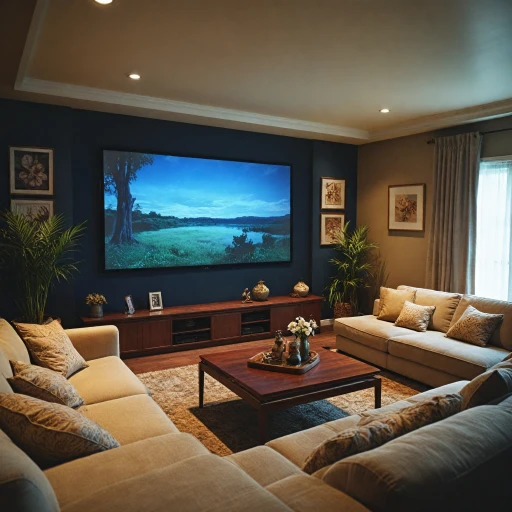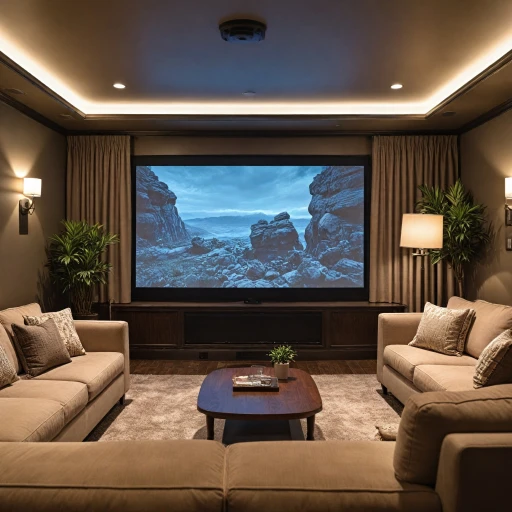Understanding Projector Screen Material Fabric
Grasping the Essentials of Projection Fabrics
When setting up a home theater, the projection screen is as pivotal as the projector itself. The choice of projection fabrics significantly influences the quality of your viewing experience. These screen materials come in various types, each with unique characteristics suited to different projection settings and rooms.
The fabric you choose for your projector screen needs careful consideration of its material properties, as these affect the image brightness, clarity, and vividness. From the commonly used matte white screens, known for their versatility in front projection, to specialized options like sharkstooth scrim for rear projection, the selection can be extensive.
Each type of screen material interacts differently with light. Factors such as gain control how ambient light impacts your screen's viewability. Understanding the reflection characteristics of your chosen fabric helps optimize the projection in diverse lighting conditions. For those who value acoustic transparency in their home theater setup, an acoustically transparent projector screen is an ideal choice.
Types of Projector Screen Fabrics
Exploring Various Screen Fabrics for Optimal Viewing
Understanding the differences in projector screen fabrics is crucial for achieving the best possible viewing experience. Various types of projection fabrics influence how the image appears, how light is reflected, and how durable the screen will be. Let's dive into some common types of projector screen fabrics.Matte White Fabric
Matte white screens are favored for their ability to offer uniform brightness, making them ideal for environments with controlled lighting. These screens provide a wide viewing angle, so viewers can enjoy the image quality from various positions within the room. The matte surface can minimize reflections, which helps in presenting a clear image without distractions.High Gain Fabric
High gain fabrics are designed to increase the intensity of the image produced by your projector. They offer excellent brightness, making them perfect for rooms with ambient light. However, this comes with a trade-off, as they might narrow the viewing angle, which could limit the view for side seats.Rear Projection Fabrics
Using rear projection screens can be a game changer in specific setups. They allow you to place the projector behind the screen, leading to a seamless image viewing experience. The material selected for rear projections must have appropriate light diffusion capabilities to ensure a sharp, vibrant image.Sharkstooth Scrim
This versatile fabric is often used for front and rear projections. Its open weave allows it to disappear when the lights behind it are extinguished, creating a dramatic effect suitable for stage applications. Plus, its IFR (Inherently Flame Retardant) properties ensure safety when used in various settings.If You're Considering Special Applications
Some specific needs might require specialized materials. For an outdoor projector setup, choosing a durable fabric that resists weather elements while maintaining image quality is crucial. Each type of screen fabric serves different needs and lighting environments. When selecting the best projector screen fabric, consider factors like your room's light conditions, the position of the viewers, and how often you plan to move or use the screen. Visit Choosing the Right Material for Your Projector Screen for more insights on fabric types and their impact on projection quality.Impact of Fabric on Image Quality
Fabric Influences on Visual Clarity and Color Precision
The fabric of a projector screen significantly impacts the quality of the projected image. One of the primary factors to consider is the "gain" of the screen material. This term refers to the reflectivity of the screen surface, influencing how bright the image appears when light from the projector hits it. High-gain materials can make images appear brighter but may narrow the viewing angle, while matte white screens often provide a wider viewing angle but with moderate brightness. The type of projection you're utilizing plays a role as well. For example, front projection demands different screen materials compared to rear projection applications. Front projection screens, usually made with matte white or other specific screen materials, are designed to reflect the image towards the audience. On the other hand, rear projection screens like the sharkstooth scrim let light filter through them, making them ideal for certain venues. Ambient light conditions in your room can also affect which screen fabric will best serve your needs. When dealing with high levels of ambient light, selecting a screen material engineered to enhance contrast and brightness might be beneficial. The regular choice is using a gain screen product designed to minimize the impact of ambient light. Additionally, different types of projection fabrics influence color reproduction and image sharpness. Some materials are treated to enhance the color spectrum and provide an accurate portrayal of hues and shades, making them a preferred choice for movie screens. This choice is essential in creating the best projector viewing experience, especially when considering factors such as light intensity and the projection environment. For more details on enhancing your home theater with the right features, including audio enhancements, you might want to delve into enhancing your home theater with built-in speakers.Selecting the Right Fabric for Your Room
Tailoring Fabric for Your Specific Viewing Environment
When selecting the right fabric for your room, several considerations come into play that can drastically affect your projection experience. The choice boils down to understanding how the fabric interacts with light and the type of projector you are using. Firstly, assess the nature of your viewing environment. Is it a space with high levels of ambient light, or can you control the lighting? For rooms with a lot of ambient light, a fabric with higher gain might be necessary. This means it can reflect more light back to the viewers, maintaining image brightness. However, a more typical setting with controlled lighting can benefit from matte white fabric. Matte white offers even light distribution, ensuring a balanced view for a wide audience, especially important in a home setting where seating might be spread across the room. For projector types, consider if you're using a short throw projector or a standard one. Short throw projectors often work best with materials designed for front projection to maintain image clarity and avoid distortion. Additionally, rear projection fabrics are ideal for environments where the projector is placed behind the screen. Also, consider how you plan to use your projector screen. If it’s part of a dynamic entertainment setup involving both indoor and outdoor movie screenings, outdoor-specific materials like sharkstooth scrim may be required for versatility. For indoor purposes, a front rear surface capable of handling both projection styles increases functionality but might come at a higher price. Each screen material brings distinct differences in how the projected image quality is affected by room characteristics and projector type, so understanding these will help tailor the best product to your specific needs. Ultimately, balancing gain, environment, and projector compatibility can enhance your viewing experience considerably.Maintenance and Durability of Screen Fabrics
Maintaining Longevity and Quality of Your Projector Screen Material
When investing in a projector screen, maintenance is key to ensuring optimal performance over time. The durability of the screen fabric affects not only the quality of your image but also the overall viewing experience. Here's how you can maintain and extend the life of both front and rear projection screens:- Regular Cleaning: Dust and dirt can accumulate on the screen surface, affecting the light and image quality. Gently wipe the screen fabric with a microfiber cloth. Avoid harsh chemicals, especially on sensitive screen materials like matte white or sharkstooth scrim, as they may damage the projection fabrics.
- Limit Exposure to Environmental Factors: If your projection screen is in an area with high ambient light, consider using curtains or shades to block sunlight, which can degrade the screen material over time. This precaution is particularly important for outdoor projector setups.
- Proper Storage: When not in use, especially for portable and outdoor movie screens, store the projector screen in a cool, dry place to prevent moisture damage. Roll-up screens should be handled carefully to avoid the formation of permanent creases.
- Frequent Inspections: Regularly check for any signs of wear and tear. Tears or holes in the screen fabric can seriously diminish image quality and should be repaired promptly. It’s advisable to keep the screen material within its "gain" specifications, ensuring the best reflection of light.
- Professional Services: For high-priced projector screens, consider periodic professional maintenance. Experts can clean and address issues like tensioning the fabric properly, which preserves the integrity of the image projection.
